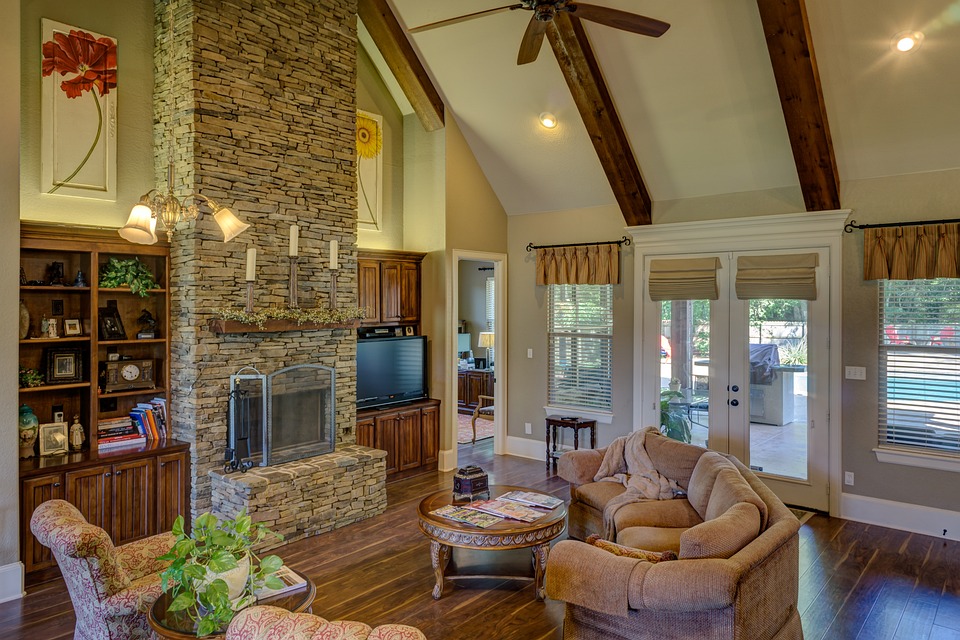The location is everything when you're ready to buy your first home. Whether you're looking for a quiet neighborhood or something more urban and exciting, there are plenty of factors to consider when choosing the right place to live. We've compiled a list of tips to help you choose your dream neighborhood.
Location, Location, Location
The most important factor when choosing a neighborhood is the location. There are many factors, such as how close it is to work or school, whether or not there's a bus stop nearby, and how much time it takes you to get from point A to point B.
When considering location, I'd recommend that you consider the amenities that are important to you and look for those features in the neighborhoods. For example:
- If walking is your preferred mode of transportation (and let's face it— it should be), choose a neighborhood with sidewalks. This will help ensure you can get around without being reliant on cars or public transit systems.
- If biking is more your thing (and again —It should be), then look for neighborhoods with bike lanes and bike tracks so that bicycling becomes an option for commuting and leisurely rides around town.
The Commute
There's no question that the commute is one of the most important factors to consider when choosing a neighborhood, especially if you work far from home.
While other parts of your life will change over time, your commute will likely not. So consider how long it takes to get to work each day, on weekends, and in all weather conditions.
The best way to understand how long it takes you to get from point A to point B is by using Google Maps' estimated drive time feature (or another similar service).
If this doesn't work for some reason — because traffic is so bad that it never predicts your journey accurately — consider taking public transportation instead of driving every day.
Schools
Families want to live in neighborhoods with good schools. Because a school has high rankings does not mean it's the right fit for your family.
You need to research and evaluate the quality of each school before applying.
If you find a school you're interested in applying to, ask questions: How many students attend? What percentage of students are minorities? Is there an accelerated program available?
These are all important factors when evaluating quality and will help determine if this is a place where your child can thrive academically, socially, and emotionally.
Amenities and Parks
Look at the amenities nearby. Amenities and parks are important because they're part of your day-to-day life.
You probably won't live in your dream neighborhood forever, so it's good to know what you like now and what you might not mind missing later.
Parks are important for families with children since they need somewhere safe to play outside when the weather is nice.
If there's no grocery store nearby or the closest restaurant is too expensive, that might be a deal breaker for some people.
Even if you don't have kids yet, having access to a good grocery store can save money on shopping trips and give you more options for eating out (or in).
The Housing Options
First, determine the size of your family. Are they getting bigger or smaller? Is there going to be another addition to the family soon?
Next, consider what style of home would suit your needs best. Do you want something with historical charm or modern conveniences? Maybe somewhere in between works best for you.
Proximity to Family and Friends
Whether you want to live close to family and friends is a big factor in choosing a neighborhood.
If you do, this is an important point. However, if you don't want to be close to them, this isn't a concern for you. After all, there's always time for visits and weekend getaways.
Crime Rate
Another important factor to consider is the crime rate. You should check if there has been a recent increase in burglaries, muggings, and other criminal activities.
If you can't find any information on your own, contact the local police department, or better yet: ask friends and family members who live in the area if they've ever experienced any problems with crime.
Also, check if any neighborhood watch groups can help with crime prevention and report suspicious activity around the neighborhood.
Housing Appreciation Potential
The housing market is a complicated thing, with factors that range from the price of oil to interest rates to economic cycles. While it's impossible to predict what will happen over the next few years, you can use past performance as a guide for your future.
Look at the history of appreciation in your neighborhood. If home values are rising rapidly and growing consistently year after year, that’s good news for you when it comes time to sell (or move).
But if median home prices have been flat or declining for several years now, then there's no reason why this trend would change anytime soon. In this case, you'd do better looking elsewhere—and preferably somewhere with better appreciation potential.
Check median home prices in the neighborhood you're moving into by searching Zillow or Trulia. They both provide recent data on homes sold within each neighborhood which gives us an idea of how much houses are worth right now--and whether they're increasing in value over time.
Cultural Diversity
Diversity of cultures can be a strength of a neighborhood. Children need to see people who look different and have different beliefs, values, and customs for them to learn about other cultures. This can help them understand the world better and make friends with those who are different from themselves.
Walkability Score
Walkability is a measure of walkable area and depends on factors such as the distance to transit and amenities. A higher walkability score means easier access to public transportation, restaurants, and grocery stores.
For example, people consider a neighborhood with a Walk Score greater than 90 out of 100 very walkable.
One with a Walk Score between 50 and 60 may require certain lifestyle changes to make walking practical. One with a Walk Score below 30 has limited pedestrian infrastructure or other impediments to walking.
These tips can help you choose the best neighborhood for you and your family.
Choosing the perfect neighborhood for your family can be a lot of fun. You will want to make sure that you look at more than one neighborhood before deciding on the right one.
Take some time to visit each area and talk with current residents so that they can tell you about their experience living there.
They will be able to point out both good and bad things about living in that area, which can help make your decision easier when choosing between them.
Another big thing is asking questions. Don't be afraid to ask questions of potential landlords or real estate agents who work with these neighborhoods regularly; they may have some insight into what it's really like living there long-term.
It's also important not to be afraid of compromising; sometimes, this means compromising our ideals about what kind of house you want versus how much money you're willing or able to spend.
Conclusion
It’s time to look at individual neighborhoods once you have your location in mind. Your first step should be to visit the neighborhood in person and talk with people there. They can give you valuable insight into what it’s like to live there now and probably give you some good tips about how things change over time. It’s also important not just for selecting a neighborhood but also for buying a home that fits within your budget.







Comments
Post a Comment